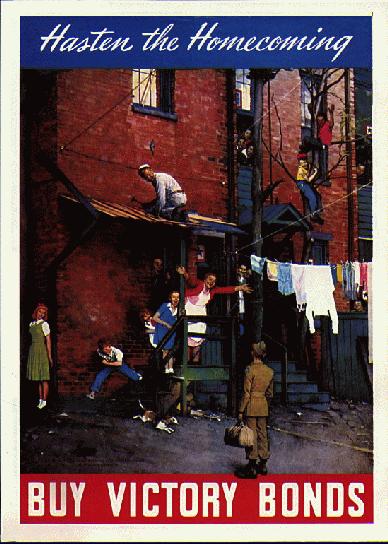Ostensibly exploring the practice of law before the internet. Heck, before good highways for that matter.
Friday, December 5, 2025
Friday, October 17, 2025
Saturday, October 17, 1925: When two ride one horse.
Whatever It Is, I’m Against It: Today -100: October 17, 1925: When two ride one ho...: French Foreign Minister Aristide Briand says the Locarno Conference lays the foundations for the United States of Europe. Hurrah! In Locarn...
This item contains an interesting one one regarding modification of the wedding vows in the Episcopal service.
Last edition:
Friday, October 16, 1925. The Locarno conference ended with several agreements in place and an atmosphere of optimism.
Friday, September 19, 2025
Saturday, September 19, 1925.
Friday, July 11, 2025
Saturday, July 11, 1925. Spain and Morocco agree to cooperate.
France and Spain, each occupying different portions of Morocco, agreed to cooperate in the Rif War against their common enemy, the Riffians.
It was, of course, a Saturday.
Friday, June 27, 2025
Saturday, June 27, 1925. An earthquake in Montana.
Last edition:
Friday, June 26, 1925. The Gold Rush.
Monday, May 26, 2025
Saturday, May 26, 1945. The Homecoming.
The Supreme Headquarters, Allied Expeditionary Force (SHAEF) was transferred from Rheims to Frankfurt-am-Main.
The Saturday Evening Post featured Norman Rockwell's "GI Homecoming" illustration that was soon used for a war bond poster. It features in one of Sarah Sundin's articles on her blog site, and this is directly linked into that:
Extremely poignant, there's a lot going on in the illustration, from the "girl next door" peeking around the corner, to the fact that the returning soldier is returning to an extremely urban, and not very attractive apartment building, something very common of urban life at the time.
The Berlin Philharmonic gave its first performance since the end of the war in Europe.
Allied forces occupied Bassein, Burma.
It was my father's 16th birthday.
Last edition:
Friday, May 25, 1945. The Clock.
Friday, May 16, 2025
Saturday, May 16, 1925.
Friday, April 18, 2025
Saturday, April 18, 1925.
Wednesday, November 6, 2024
Thursday, November 6, 1924. The 100th Anniversary of Christopher Robin and Winey the Pooh.
Winston Churchill was named Chancellor of the Exchequer.
Nikola Pašić became Prime Minister of Yugoslavia for the second time.
Published on this date:
It does not seem possible to me to make an adequate expression concerning the Presidency of the United States. No other honor equals it; no other responsibility approaches it. When it is conferred by an overwhelming choice of the American people and vote of the Electoral College, these are made all the greater.I can only express my simple thanks to all those who have contributed to this result and plainly acknowledge that it has been brought to pass through the work of a Divine Providence, of which I am but one instrument. Such powers as I have I dedicate to the service of all my country and of all my countrymen.In the performance of the duties of my office I cannot ask for anything more than the sympathetic consideration which my fellow-Americans have always bestowed upon me. I have no appeal, except to the common sense of all the people. I have no pledge except to serve them. I have no object except to promote their welfare.
Life Magazine came out with a cover featuring a Girl Scout.
The Irish Boundary Commission held its first meeting to come to an agreement of the dividing line between the Irish Free State and the United Kingdom.
Last edition:
Wednesday, November 5, 1924. Expelled from the Forbidden City.
Friday, September 27, 2024
Saturday, September 27, 1924. Politicin'
Friday, August 30, 2024
Saturday, August 30, 1924. Late summer scenes.
The Dawes Plan went into effect.
Germany replaced paper marks with a coin, due to hyperinflation.
Clashes with the Ku Klux Klan resulted in six deaths in Herrin Illinois.
The French High Commission of the Levant created Lebanese citizenship.
Edwards, Prince of Wales, met with Calvin Coolidge.
Saturday magazines were out.
Monday, April 29, 2024
Saturday, April 29, 1944. More friendly fire, Raid on Truk, More German strikes in the Channel.
Just a few days after U.S. ships shelled US Army troops at Slapton Sands in Operation Tiger in a friendly fire incident, the PT-346 was sunk, killing nine sailors and wounding nine, by Marine Corps Corsairs.
Lieutenant James Burk ordered medic John Frkovich to take his Burk's life jacket so he could survive and treat the wounded. Wilbur Larsen, USNR, received the Navy Marine Corps medal for saving wounded non-swimmer Forrest May's life.
An American air raid on Truk destroyed most of the island's Japanese aircraft.
On New Guinea, the captured Japanese airfields at Hollandia and Aitape become operational for Allied aircraft.
The HMCS Athabaskan was sunk in the English Channel by the T24, once again showing active Kriegsmarine activity in the Channel. The T24 picked up 83 men as prisoners, 44 were rescued by the Allies, and 123 went down with the ship.
The I-183 was sunk off the Bungo Strait by the USS Pogy.
The U-421 was sunk at Toulon in an American air raid.
Last prior edition:

.webp)




.jpg)


.jpg)





.webp)






















.jpg)



